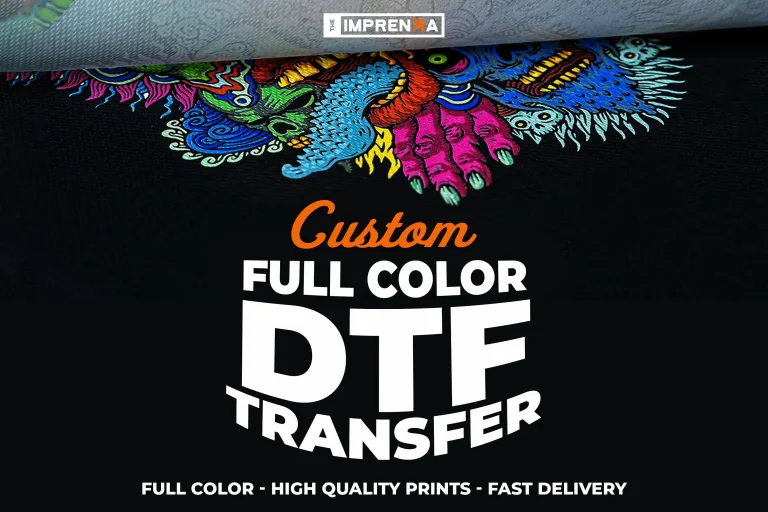DTF transfers are transforming the landscape of custom apparel printing, delivering vibrant designs that quickly catch the eye. With the right DTF transfer size, you can ensure that your artwork resonates perfectly with your chosen fabrics, enhancing the overall aesthetic of your garments. The versatility of DTF printing allows for impressive results on various fabric types, making it an ideal method for contemporary fashion. Understanding how to select the best sizes for DTF transfers is paramount; it can significantly influence both the visual appeal and durability of the designs. In this article, we’ll delve into the factors influencing DTF transfer choices and the impact of sizing on your printing projects.
Also known as Direct-to-Film printing, DTF transfers are one of the most innovative methods in garment decoration today. This technique involves applying your custom designs onto film, which is then transferred to a range of fabrics, making it perfect for personalized apparel. The selection of appropriate transfer sizes is essential for achieving the best results, as it dictates the effectiveness of the print on various fabrics. Additionally, understanding fabric compatibility with DTF can significantly enhance the quality and longevity of your designs. By exploring different approaches to sizing, you can elevate your custom apparel printing to meet the demands of a modern fashion market.
Understanding DTF Transfer Sizes
Determining the right size for DTF transfers is a fundamental step in the custom apparel printing process. DTF, or Direct-to-Film, allows intricate designs and vibrant colors to be printed onto a film which is then transferred onto various fabric types. The size of the transfer must complement both the design and the garment it will be applied to. For example, a large, bold graphic may look stunning on a shirt but could overwhelm a smaller item like a hat. Thus, the scale of the artwork plays a vital role in deciding the transfer size.
Additionally, it’s essential to consider the potential distortions that can occur with different DTF transfer sizes. A print that is too large for a lighter material might not adhere properly, leading to unsatisfactory results such as peeling or cracking. Understanding the dimensions of your design relative to the fabric type is crucial in ensuring that both the visual aspect and the durability of the transfer are optimized.
Frequently Asked Questions
What are the best sizes for DTF transfers on t-shirts?
The best sizes for DTF transfers on t-shirts typically range from 8 to 12 inches wide for larger designs, such as graphics or slogans. For smaller designs, such as logos, sizes around 3 to 5 inches work well. Selecting the right size ensures vibrant color representation and optimal visibility on the garment.
How does fabric compatibility affect DTF transfer sizing?
Fabric compatibility is crucial for DTF transfer sizing because different materials (like cotton, polyester, or blends) react differently to heat and pressure. Larger transfers tend to adhere better to thicker fabrics, while lighter fabrics work best with smaller designs to prevent distortion or cracking.
Can I use DTF transfers for custom apparel on athletic wear?
Yes, DTF transfers are excellent for customizing athletic wear. However, smaller designs are recommended to maintain aerodynamics and not hinder performance. Consider sizes around 2 to 4 inches for logos or small graphics that enhance the apparel without overwhelming it.
What should I consider when choosing DTF transfer sizes for hoodies?
When selecting DTF transfer sizes for hoodies, consider the overall design dimensions, which often work best at 12 to 16 inches wide for large, impactful graphics. Ensure that your design is balanced and visually appealing without appearing too congested on the garment’s surface.
How can I ensure my DTF prints look great on different fabric types?
To ensure DTF prints look great on various fabrics, test different size designs on fabric samples beforehand. A larger transfer may work better on thick materials, while smaller designs are ideal for lighter fabrics. This testing phase is crucial for achieving the best adhesion and aesthetics.
What are the recent trends impacting DTF transfer sizes in custom apparel?
Recent trends in DTF transfer sizes for custom apparel include personalization and the demand for unique designs. As consumers seek more customized options, the sizing must fit various garments, reflecting current fashion trends and encouraging designers to innovate in their sizing choices.
| Key Factors to Consider | Recommended Sizes for DTF Transfers | Ideal Fabric Types | Common Uses |
|---|---|---|---|
| Design Dimensions | Small transfers for hats, shirts (pockets), and backpacks. Larger transfers for t-shirts, hoodies, and sweatshirts. | Cotton, polyester, and their blends. Thicker fabrics for larger transfers; lighter fabrics for smaller designs. | Athletic wear benefits from smaller designs; casual clothing allows for larger, bolder statements. |
| Testing and Prototypes | Mock-up tests help determine size effectiveness on samples before production. | Prototypes allow for visible adjustments based on design and fabric interaction. | Adjusting sizes based on market trends keeps designs relevant. |
Summary
DTF transfers have become a pivotal aspect of custom apparel, marking a significant shift in how designs are applied to fabrics. Choosing the right size for DTF transfers is essential for maximizing the visual impact of your designs, ensuring they complement the garment’s fabric type, and achieving a perfect fit. Designers must weigh various factors such as the dimensions of their artwork, the characteristics of the fabric, and the intended use of the apparel to make informed decisions. With the rise of personalization and advancements in design techniques, understanding the nuances of transfer sizing not only enhances the overall garment’s appeal but also meets the ever-evolving demands of consumers in today’s fashion landscape.

